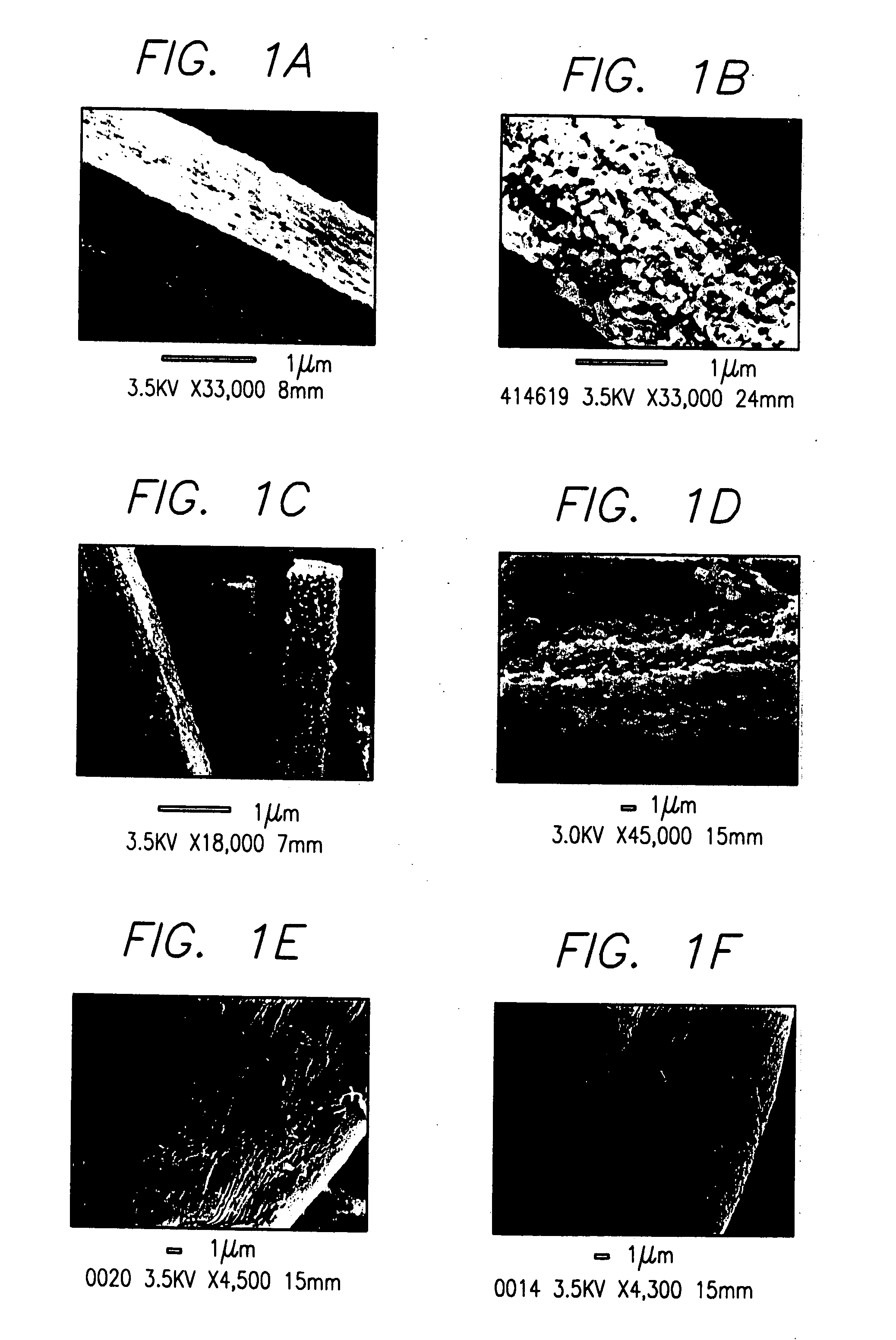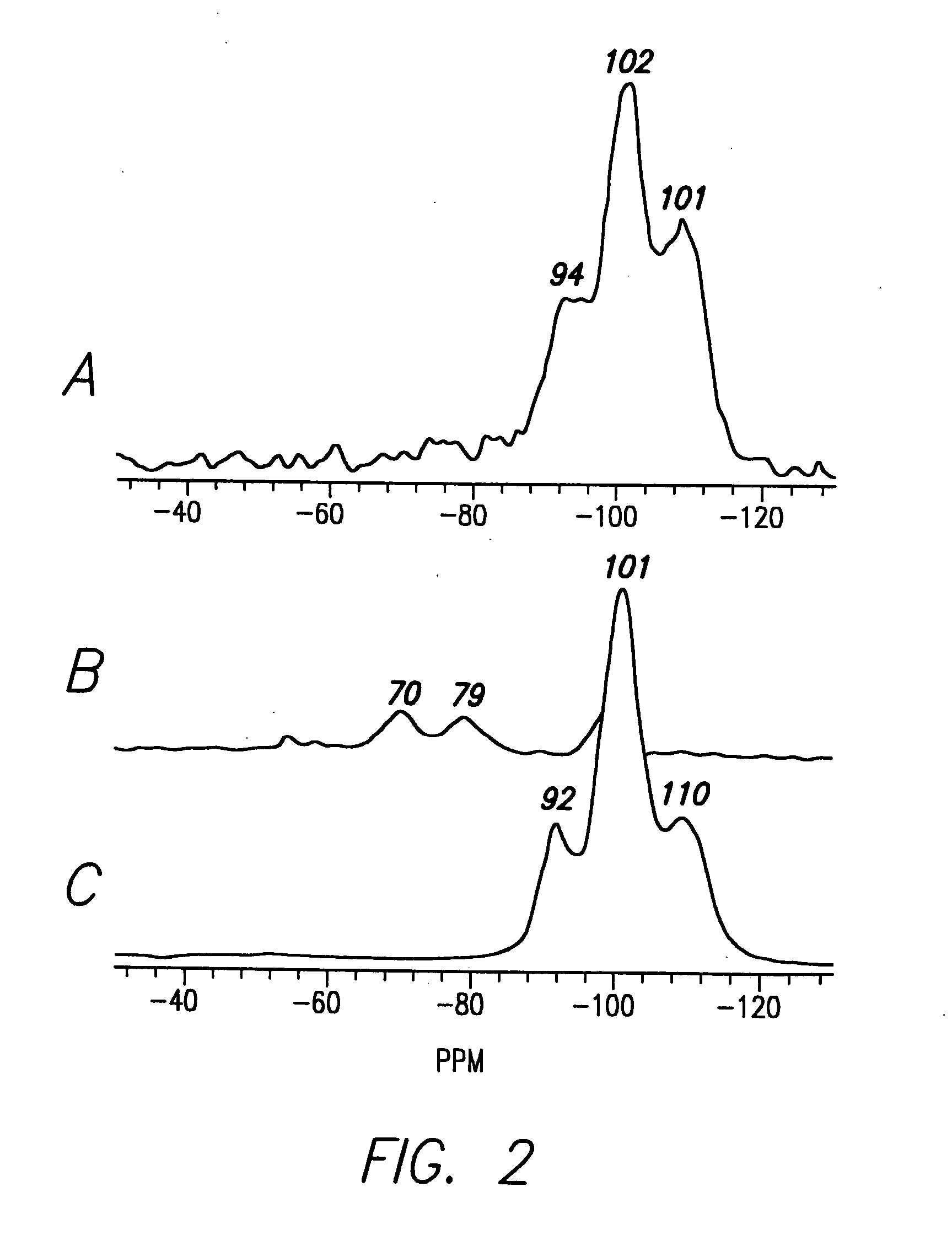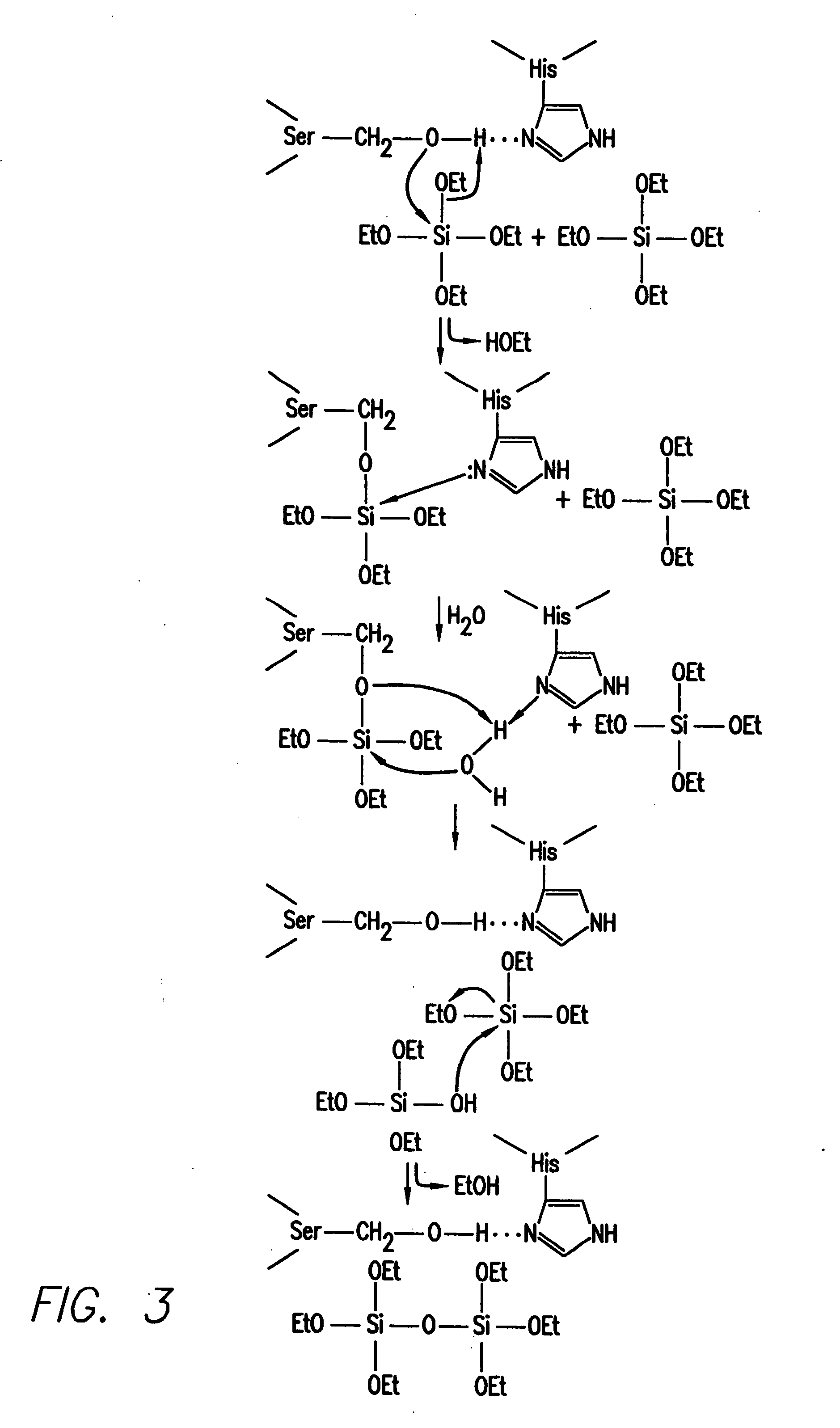Methods, compositions, and biomimetic catalysts for the synthesis of silica, polysilsequioxanes, polysiloxanes, non-silicon metalloid-oxygen networks, polymetallo-oxanes, and their organic or hydrido conjugates and derivatives
- Summary
- Abstract
- Description
- Claims
- Application Information
AI Technical Summary
Benefits of technology
Problems solved by technology
Method used
Image
Examples
example 1
[0137] In this Example, silicatein filaments and subunits from a marine sponge direct the polymerization of silica and silicones in vitro.
[0138] Materials and Methods
[0139] Isolation of Silicatein Filaments and Analysis of Reactions with Silicon Alkoxides. Insoluble silicatein filaments were extracted from the acid- and hypochlorite-cleaned silica spicules of Tethya aurantia by dissolving the silica in buffered HF (1M HF, 5M NH4F) as described previously [Shimuzu et al. (1998), supra]. The HF was removed by dialysis against pure water (Milli-Q) and the filaments collected by filtration. Reactions of the insoluble filaments [either air-dried or suspended (at 0.5 mg / ml) in Tris-HC1 buffer (0.6 ml, 25 mM, pH 6.8)] with TEOS (1.0 ml; 4.5 mmoles) were performed with gentle shaking at room temperature for 12 h. The silicatein filaments were added in aqueous Tris buffer for all reactions except that illustrated in FIG. 1C, in which the air-dried filaments were reacted with pure TEOS. The...
example 2
[0148] This example demonstrates the block copolypeptide mediated biomimetic synthesis of ordered silica structures.
[0149] Block copolypeptides were screened for their ability to react with TEOS to form silica. Refering to Table 2 (below): Yield=total isolated yield of deprotected copolymer. SiO2 Rate=initial rate of silica formation (μmoles / h) mediated by block copolypeptide at a concentration of 5 mg / ml in 50 mM Tris-HCl buffer, pH 6.8 and an initial TEOS concentration of 3.4 M. The silica precipitate was collected by centrifugation, washed with 95% ethanol and solubilized in 0.2 M NaOH at 37° C. The amount of silica was then determined using the spectrophotometric molybdate assay (24, 25) N2=silica preparation was carried out under an oxygen-free nitrogen atmosphere; Air=silica preparation was carried out in air. In the absence of polymer, one was used as the control. Shape=morphology of silica particles: N=non-ordered; S=spheres; E=elongated globules; C=columns. NA=not applicab...
example 3
[0159] Silicatein filaments (2 mm length x 1-2 micrometer diameter) were suspended in water at room temperature and reacted with titanium (IV)bis(ammonium lactato)-dihydroxide (TBALDH), the structure of which is illustrated in FIG. 6. The final molarity of the Titanium alkoxide in the example illustrated was 0.849 M. Biphasic reaction mixtures in which the precursor is added in an organic solvent also are effective. The mixture was rotated to provide gentle agitation in a 1 ml polyethylene comical tube for 24 hours. The reaction product was then harvested by centrifugation in an Eppendorf microcentrifuge at 14,000 rpm for 10 minutes, re-suspended in water and pelleted by centrifugation again for another 10 minutes. The resulting pellets were dried at 37 degrees C. Physical characterization identified the product as Titanium Dioxide that had been formed on the silicatein filaments.
PUM
| Property | Measurement | Unit |
|---|---|---|
| Composition | aaaaa | aaaaa |
| Structure | aaaaa | aaaaa |
| Covalent bond | aaaaa | aaaaa |
Abstract
Description
Claims
Application Information
 Login to View More
Login to View More - R&D
- Intellectual Property
- Life Sciences
- Materials
- Tech Scout
- Unparalleled Data Quality
- Higher Quality Content
- 60% Fewer Hallucinations
Browse by: Latest US Patents, China's latest patents, Technical Efficacy Thesaurus, Application Domain, Technology Topic, Popular Technical Reports.
© 2025 PatSnap. All rights reserved.Legal|Privacy policy|Modern Slavery Act Transparency Statement|Sitemap|About US| Contact US: help@patsnap.com



